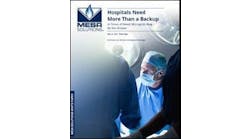Credit: Anton Fomkin
We live in an age when shiny new things grab our attention. One day it’s the Apple watch, the next the driverless car, and another day a robot doing something just too human.
In the electric power industry, the innovation isn’t just about technology, but about policy and markets too: new ideas about making, buying and selling power, new players and new platforms.
While many of these ideas are good and some truly great, one has to ask: Do we sometimes forget the old-fashioned things that work, like energy efficiency?
New York offers a good example. Reforming the Energy Vision is one of the biggest innovations in US energy policy in a long time. Known as REV, it gives local energy a boost through a new market exchange. The REV proposal is getting praise from within the electric industry for a lot reasons, which I won’t go into here, but you can read about in this story.
As good as it is, the REV proposal seems to leave behind energy efficiency. At least that’s the word from the Advanced Energy Economy and a collaboration of clean energy groups, in a letter to the New York Public Service Commission.
REV focuses on market transformation, and the groups support this idea. But it leaves behind some of the tried-and-true approaches that boost energy efficiency: incentives and rebates for nascent technologies, state energy savings goals, and clear mandates for utilities.
New York policymakers seem to think that some of these approaches inhibit free market forces. But as the letter points out, history has shown that helping energy efficiency tech in its early stages offers real value. Customers and businesses get to test drive the product and see if it’s effective. If it is, more people install it, prices fall, and it becomes ready to stand on its own in the market. Then the incentives can wind down. This happened with energy efficient refrigerators and industrial motors, for example.
“The transformation of the markets would not have occurred absent the intervention of energy efficiency programs derived from public policy choices and regulatory oversight,” said the letter.
REV appears to leave behind other important buttresses of energy efficiency too, according to the group.
For example, studies by the American Council for an Energy-Efficient Economy show that states with hard energy efficiency targets capture greater amounts of cost-effective efficiency. New York is sunsetting its energy efficiency portfolio standard. Utilities are left with vague goals, likely to get lost as they take on the significant new task of running the distributed energy exchange envisioned by REV.
Also, the fate is uncertain of 1.2 million MWhs of energy savings that would have been acquired by the New York State Research and Energy Development Authority, the letter said.
The group fully supports the REV concept. And it isn’t interested in keeping energy efficiency programs dependent on incentives forever. But energy efficiency often needs early help because it faces market barriers that other distributed energy resources are spared. Invisibility, for example. Energy efficiency is not something you can buy and put on your roof like a solar panel.
And persuading consumers or businesses to invest in energy efficiency requires a more complex sales proposition. For example, some hand holding may be required to convince the building owner that it’s more cost effective to replace the aging heating system with an efficient one. This is especially a problem if the renter pays the utility bill.
We’re all a little drunk these days on the idea of the new-new thing that will change our lives and businesses. The fate of energy efficiency in New York is a bit sobering.
Signatories to the letter include: the Advanced Energy Economy Institute, Environmental Advocates of New York, Pace Energy and Climate Center, Vermont Energy Investment Corporation, Natural Alliance for Clean Energy, New York Resources Defense Council and Northeast Energy Efficiency Partnerships.
Follow us on Twitter @EfficiencyMkts.






